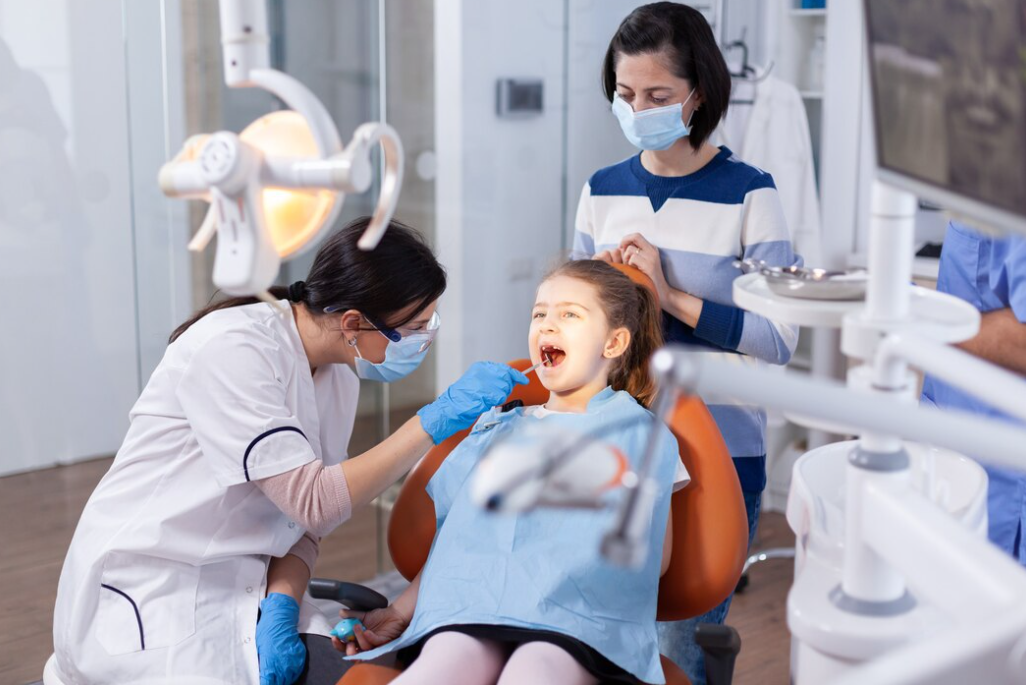
The Link Between Pediatric Sleep Apnea and Oral Health
Introduction
Pediatric sleep apnea disrupts children’s breathing patterns during sleep, causing pauses in respiration. Although commonly linked to respiratory and neurological concerns, its often-overlooked impact on oral health is significant. Recognizing the connection between pediatric sleep apnea and oral health is crucial for parents, caregivers, and healthcare professionals, particularly pediatric dentists, to ensure comprehensive care for affected children.
Orthodontic Implications
Pediatric sleep apnea can have direct implications on oral and facial development, particularly in the realm of orthodontics. Children with sleep apnea may exhibit mouth breathing, which can lead to changes in the alignment of teeth and jaw structure. Chronic mouth breathing can result in an open-mouth posture, altering the normal growth and positioning of the teeth. Over time, this can contribute to malocclusion or misalignment of the teeth, requiring orthodontic intervention.
Dental Erosion and Dry Mouth
Children with sleep apnea often experience breathing difficulties, leading to the tendency to breathe through the mouth during sleep. Mouth breathing can cause a decrease in saliva production, resulting in dry mouth. Saliva plays a crucial role in maintaining oral health by neutralizing acids, preventing tooth decay, and promoting overall oral hygiene. A reduction in saliva flow increases the risk of dental erosion, cavities, and gum disease.
Enlarged Tonsils and Adenoids
Enlarged tonsils and adenoids are common contributors to pediatric sleep apnea. These structures, located at the back of the throat, can obstruct the airway during sleep, leading to breathing difficulties. The presence of enlarged tonsils and adenoids can also impact oral health by influencing the development of the palate and affecting the positioning of teeth. Addressing these anatomical issues through medical intervention, such as the removal of tonsils and adenoids, can positively impact both sleep apnea and oral health.
Bruxism (Teeth Grinding)
Children with sleep apnea may be more prone to bruxism, which is the habit of grinding or clenching the teeth. Bruxism is often a response to the body’s attempt to open the airway during sleep. This habit can lead to excessive wear on the teeth, enamel erosion, and jaw pain. Monitoring and managing bruxism in children with sleep apnea are crucial aspects of maintaining optimal oral health.
Impact on Facial Growth
The quality of sleep plays a pivotal role in the growth and development of children, including their facial structure. Sleep apnea can disrupt the natural growth processes, potentially leading to alterations in facial features. Children with untreated sleep apnea may exhibit long-term effects on the development of the lower jaw and midface, which can, in turn, impact oral health and overall facial aesthetics.
Collaborative Approach to Care
Given the intricate interconnection between pediatric sleep apnea and oral health, a collaborative approach is crucial, involving pediatricians, sleep specialists, and dentists, particularly those associated with dental clinics in Dubai. Routine dental check-ups must encompass an evaluation of sleep habits and breathing patterns, particularly when risk factors for sleep apnea are identified. Conversely, children diagnosed with sleep apnea should undergo thorough dental evaluations at a reputable dental clinic in Dubai to address potential oral health concerns.
The link between pediatric sleep apnea and oral health is a multifaceted aspect of child well-being that requires attention and awareness. Recognizing the impact of sleep-disordered breathing on orthodontic development, dental erosion, bruxism, and facial growth is crucial for early intervention and comprehensive care. A holistic approach that involves healthcare professionals from different disciplines ensures that children with sleep apnea receive the necessary support to address both their respiratory and oral health needs. By understanding and addressing these connections, we can pave the way for better overall health outcomes for children affected by sleep apnea.


